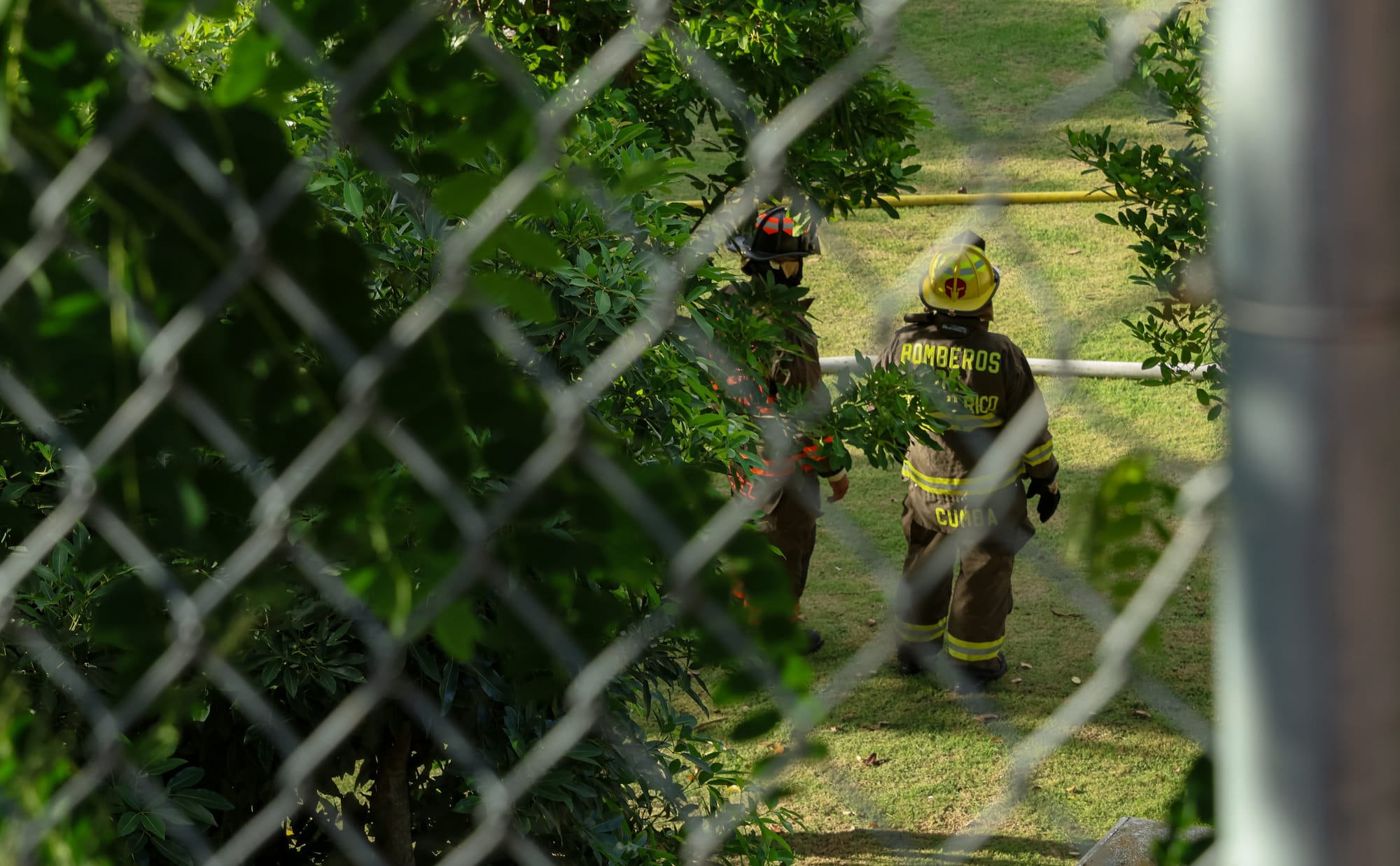There's So Many 'Forever Chemicals' Lawsuits in Puerto Rico
Finding six lawsuits filed against more than 20 companies because of toxic "forever chemicals" sent me down a rabbit hole of PFAS lawsuits in Puerto Rico.

The Municipality of Moca, the Municipality of Ceiba, the Buenos Aires Community Aqueduct, the United Firefighters Syndicate and two firefighters filed separate federal complaints against 3M and DuPont, along with more than 20 other companies, between May and June 2024 over alleged environmental and economic damages resulting from products made with "forever chemicals" without alerting to their toxic health effects.
Per- and polyfluoroalkyl substances (PFAS) are thousands of manmade chemicals used to make everything from shoes to electronics to nonstick cookware because of their water- and stain-resistant properties. They are toxic in incredibly small amounts and are pretty much indestructible, which is why they are known as “forever chemicals.” Because of their continued use in hundreds of products – even when people knew they were toxic – they can be found in everything (including your blood).
PFAS have been used in firefighter protective equipment and firefighting foam, called aqueous film-forming foam (AFFF), for decades because they're also fire-resistant. AFFF has been used by civilian airports, fire departments and military installations since at least 1979.
The six complaints allege the forever chemicals used in firefighting foam contaminated wells, groundwater, and municipal land – possibly affecting the health of the plaintiffs and the people they represent.
“It’s very alarming to hear that there are chemicals that could harm or endanger the health of our communities,” said Miriam Matos Díaz, president of the Buenos Aires Community Aqueduct.
While there is some variation between the companies being sued in each lawsuit, all include 3M and DuPont, as well as firefighting foam and gear manufacturers.
The plaintiffs are looking for the costs to monitor and test property for PFAS, medical monitoring of the plaintiff's members, removal of AFFF stock and replacement with fluorine-free foam, and a public outreach program to warn about the dangers of PFAS that also explains status of investigation and remediation activities to firefighters and local and state governments.
Additionally, the lawsuits are seeking these companies disclose all research and studies related to the effects of PFAS on the environment and human health.
The Buenos Aires Community Aqueduct provides “cleaner water” than the Puerto Rico Aqueducts and Sewers Authority (PRASA), according to Matos Díaz. Their aqueduct serves about 500 people, most of them elderly. She is worried about the next step for her community if their water supply is contaminated with PFAS. They are currently running a series of tests on their water.
“Defendants did not warn public entities, firefighter trainees who they knew would foreseeably come into contact with their AFFF products, or firefighters employed by civilian and/or military employers that the use of and/or exposure to AFFF Defendants’ products containing PFAS and/or their precursors would pose a danger to human health,” reads the complaint filed by the United Firefighters Syndicate.
Internal 3M and DuPont memos have shown that these companies knew about the dangers of PFAS but kept it secret and downplayed their effects for decades.

Nearly half of all the tap water in the United States is estimated to have one or more "forever chemical," according to a study from the U.S. Geological Survey.
The Environmental Protection Agency (EPA) set its first ever limit on PFAS in drinking water earlier this year. These strict limits will require utilities to reduce them to the lowest level they can be reliably measured.
PRASA has found at least 13 water collection systems with PFAS. The agency will continue testing until 2025 and will test 159 water systems in total. Some of the affected municipalities are Aguadilla, Ponce, Gurabo, Aibonito, and Salinas. PRASA has said it will be testing filtration projects at several sites.
“If we test positive for this chemical, how are we going to clean it up?” Matos Díaz, who is also president of the Non-PRASA Aqueduct Systems Organization of Puerto Rico (OSAN), an island-wide network of 71 water systems, asked.
She explained that other private aqueducts across Puerto Rico are considering filing their own lawsuits.
Ángel “Beto” Pérez Rodríguez, mayor of Moca, echoed Matos Díaz’s worry about how it could affect cancer rates in Puerto Rico, which registers about 16,000 cases and 5,000 deaths per year.
Exposure to PFAS in water, food, consumer goods, and firefighting equipment has been linked to increases in cancer rates.
The two firefighters' and the United Firefighters Syndicate's complaints allege they had been diagnosed with cancer and thyroid diseases because of their exposure to the forever chemicals in their gear. Two lawsuits filed by other Puerto Rican firefighters at separate times contain similar allegations.
Although Puerto Rico has a lower age-adjusted cancer rate than the U.S., when it comes to places like Vieques and Culebra — which served as military installations and testing sites for decades — cancer rates are surging. A 2017 analysis found that women under 50 in Vieques have a 280% higher lung and bronchus cancer rate than mainland Puerto Rico. Men between 50 and 64 have a 200% higher rate. In Vieques alone, “13 areas have been identified as possible AFFF or other PFAS-containing material source/release areas,” according to the U.S. Navy.
Maps from a PFAS federal complaint filed in May 2023 by the Commonwealth of Puerto Rico show that some testing sites already found to have PFAS match places that currently house or used to house military installations and airports.
Matos Díaz said her community was only told about the extent of possible damages caused by PFAS when she was approached by Weisbrod Matteis & Copley PLLC and the Environmental Litigation Group, P.C, who are representing the plaintiffs in the six lawsuits.
The United Firefighters Syndicate and the Municipality of Ceiba, as well as their legal representation, did not respond to a request for comment.
After being filed, the six lawsuits joined the District of South Carolina's AFFF product liability class action multidistrict litigation (MDL), which groups cases concerning damages caused by firefighting foam. In total, there are over 8,000 member cases.
The City of Aguadilla and the City of Manatí filed lawsuits against many of the same companies in April and September of last year, respectively. Both are also part of the AFFF MDL.
As mentioned above, the Commonwealth of Puerto Rico has also filed federal complaints against many of these companies through the District of Puerto Rico and the District of South Carolina in May 2023.
The first lawsuit, filed through Puerto Rico’s Department of Environmental and Natural Resources (DRNA), was voluntarily dismissed after the case was transferred to South Carolina. A DRNA spokesperson said “the lawsuit has not been abandoned, but is now being managed by the Department of Justice.”
Meanwhile, the second lawsuit was amended shortly after an MDL member case was opened to include PRASA, the Puerto Rico Port Authority, and the Puerto Rico Electric and Power Authority. The case is being represented by the Department of Justice, Edelson PC, Miramar Group LLC, and Miner, Barnhill & Galland, PC.
“PFAS contamination within the Commonwealth could have been significantly reduced or avoided had Defendants taken action decades ago when they first knew of the environmental and health risks associated with PFAS chemicals,” reads the second lawsuit.
The lawsuit is seeking “the full costs related to past, present, and future investigation, testing, sampling, and assessment, remediation, removal, and other actions necessary to detect, delineate, abate, remove, and remediate PFAS contamination in the Commonwealth’s surface water, groundwater, soils, sediments, plants, wildlife and other natural resources and to restore such natural resources to their original condition prior to the contamination.”
Earlier this year, the District of South Carolina approved 3M’s $10.3 billion settlement and DuPont, Chemours, and Corteva’s $1.185 billion settlement in the AFFF MDL. Both were exclusive to U.S. public water systems being represented in the class action.
PRASA dismissed part of its claims after agreeing to the settlements.
Neither the Puerto Rico Department of Justice nor PRASA responded to requests for comment.
As of April 16, 2024, 30 State Attorneys General have initiated litigation against PFAS manufacturers for contamination of their states’ natural resources, according to the Safer States, a national alliance of environmental health organizations working to safeguard the planet from toxic chemicals.
In 2023, TIME wrote that lawsuits over forever chemicals could eclipse the more than $200 billion paid by Big Tobacco in the 1990s. Earlier in the year, a lawyer from a firm that defends companies in high-stakes litigation said they should prepare for a “wave of lawsuits with potentially ‘astronomical’ costs,” according to the New York Times. Some of these lawsuits are already being won.
Puerto Rico has long been an important location for environmental justice litigation. In November 2022, 16 municipalities filed a first of its kind class-action federal lawsuit against fossil fuel companies alleging these companies colluded to downplay the impacts of climate change and that they should be held responsible for financial damages caused by the 2017 Atlantic hurricane season. More recently, American and Puerto Rican conservation groups sued the Federal Emergency Management Agency (FEMA) and the U.S. Department of Homeland Security over their rebuilding of a fossil fuel electrical grid instead of investing on distributed renewables. Earlier this year, a Puerto Rican environmental organization was part of a lawsuit against both agencies to get them to define “resilient” and “resiliency.”
Heavy Weather has uploaded all of the mentioned complaints and several other documents to Courtlistener. (1 | 2 | 3 | 4 | 5 | 6 | 7 | 8 | 9 | 10 | 11 | 12)

